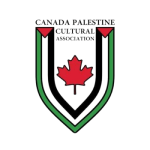Palestinian embroidery, Tatreez, is a cornerstone of the Palestinian heritage, which its splendor stands out in the Palestinian cultural dresses, Thobes.
As a female led art, Tatreez is a method of self-expression, communication and representation of womanhood.
The practice of Tatreez originated in Palestine 3000 years ago. A unique form of embroidery that brings together colored threads in various patterns to create traditional motifs.
Motifs are area specific, and are the language of distinction between different parts, villages and cities of Palestine.
The art of Tatreez developed different changes over time to reflect the events that had happened to the Palestinians, which can be seen in the Thobes before 1948 where the motifs and colors specifies areas, social and marital status of women, and Thobes in Diaspora where the women in the refugee camps embroider their memories of their homelands on their dresses, then we see Thobes during the first intifada where women changed the motifs into the Palestinian flags and map so they can walk around carrying those symbols on their Thobes without the solders being able to take them down as they do with men. Nowadays the Tatreez is being applied to modern designs so Palestinian women can wear them in all occasion and show their pride of their heritage anywhere they go.
Believing in the importance of preserving this Palestinian art and to pass down skills and patterns from generation to generation as part of our Palestinian identity and existence, Canada Palestine Cultural Associations started in April 2022 the “ Tatreez Training Workshops “, open to all ages and backgrounds in which students will learn simple stitches and motifs and progress to more complicated ones and to learn how to apply Tatrees to garments of their choice.
CPCA

